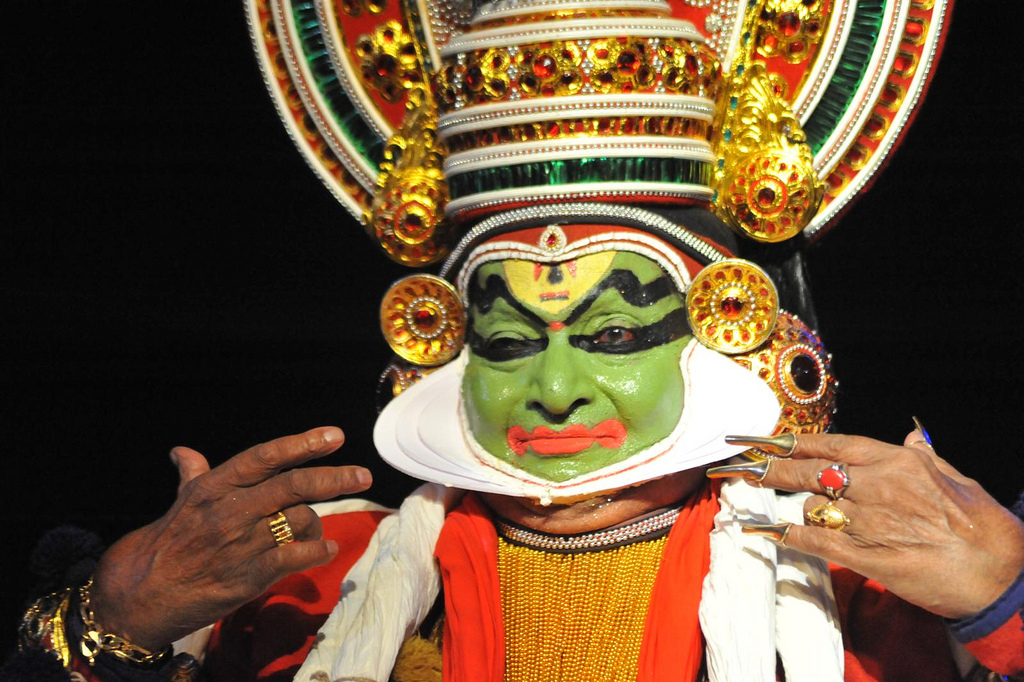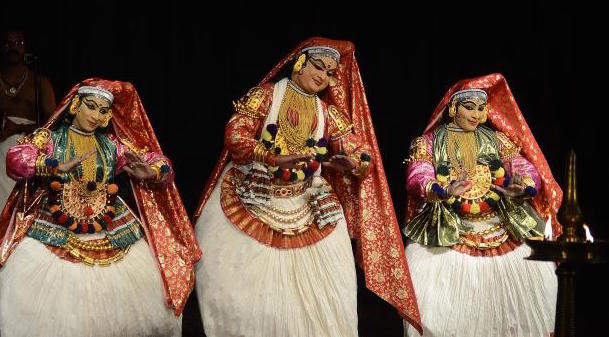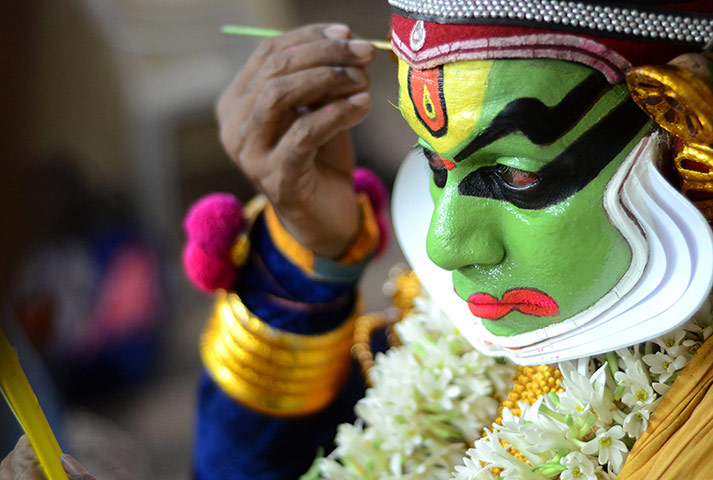Introducing Kathakali, the next style of the Indian Dance Series!
Kathakali is a form of Indian dance-drama that originates from Kerala. Dating back to the late 16th/early 17th century, Kathakali was performed in both temples and palaces of India. The word “kathakali” comes from the Malayalam root words “katha”, meaning story, and “kali”, meaning play.
Unlike Mohiniattam, which is typically performed solo, Kathakali is a group theatre presentation in which the dancers take on the roles of different characters from Hindu epics. Kathakali dance dramas typically last from dusk until dawn the next day, as the tales are depicted in great detail. Although only male dancers used to perform this art form back in the day, many more women have been entering the arena of Kathakali today.
An integral feature of Kathakali is costume and makeup (known as chutti), which enhance the dancers’ expressions. Costume and makeup change depending on the character an individual portrays in the dance drama. For instance, if a dancer is playing a villain (such as Ravana from the Ramayana), then he will wear mostly red color paint on his face, hands, and feet. Green paint is typically used for characters of high-birth, such as kings and other nobles, whereas black is used for more aggressive characters of lower-birth.
In addition to paint and makeup, Kathakali artists wear heavy headdresses to raise their characters above the mortal level and make them seem more powerful and other-worldly. They also wear large bulging umbrella-like skirts.
In order to cultivate the physical and mental stamina required to perform Kathakali, dancers undergo intensive training in Kalaripayattu (a form of martial arts in Kerala). Like other Indian classical dancers, Kathakali performers also use mudras (hand gestures).

The music that accompanies Kathakali has some similarities to South Indian Carnatic Music but is also decidedly different in its sound and tonal quality. Similar to Mohiniattam, vocalists sing in the Sopanam style with songs in Manipravalam (mix of Sanskrit and Malayalam). The instruments that are usually found in a Kathakali orchestra represent traditional Kerala percussion and include: chenda, maddalam, edakka, and elethalam or manjira (cymbals similar to the nattuvangam used in Kuchipudi and Bharatanatyam).
Since Kathakali is a rather rare style of Indian classical dance, the number of mainstream Kathakali performers is scarce. However, some well-known artists and performers are Padmasri Guru Chenganur Raman Pillai, Padma Bhushan Kalamandalam Ramankutty Nair, and Padmasri Kalamandalam Krishnan Nair. In addition to being a Kathakali dancer, Kalamandalam Gopi has also starred in a few Malayalam films.

References:





